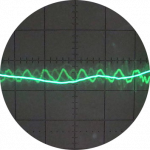Is there a way to estimate annual solar consumption ?
Is there a way to estimate how much solar production (south facing unshaded) could be consumed by an ASHP in a year?
eg 50%
Posted by: @thebinmanIs there a way to estimate how much solar production (south facing unshaded) could be consumed by an ASHP in a year?
eg 50%
Short answer is No.
Way to many variables, different life styles, size of array, shading, tree or clouds, etc, you can only increase likelihood of using excess PV by timing your DHW when solar production is likely. Also use the heat pump on full weather compensation so it's always ticking away using all excess is available.
Also depends on if you use the ASHP for cooling in summer.
@saenergy are there any tools that can assist with guesstimates?
Get a copy of The Ultimate Guide to Heat Pumps
Subscribe and follow our YouTube channel!
Online I used the Energy Savings Trust PV calculator but it openly points out that if you have any equipment with a high demand then its results could very well be inaccurate.
Ticking the box to say I had a heat pump it suggested 36% of annual solar production could be consumed. However I then ticked the box for heat pump and EV and it still said 36% with the remainder spare.
Just as a thought, on another thread I posted a spreadsheet of my stats so since it's still in "my media" I've reposted it below.
My reasoning is that my solar array is also South facing (6.5kWp) and my ASHP is an 8.5kW Ecodan meaning the setup should be close enough to your circumstances to be able to draw some reasonable extrapolations. It won't necessarily allow you to answer your question explicitly since something as simple as only heating DHW during the day when there's sunshine would markedly change whether your ASHP is actually using grid electrons or free ones, but it should give you a pretty firm idea of how the solar array (with battery) and ASHP feed into overall costs.
One detail that might be missed, but which I found really useful, is the tab called "Monthly Percentages". It's a couple of sets of figures I found online after being pointed in the right direction by other forum members and it details what percentage of the yearly solar PV generation could be expected in each month and also what percentage of the year's total energy consumption could be attributed to that month too. That will go more than a small way to help you get towards the answer you posed at the beginning of the thread.
105 m2 bungalow in South East England
Mitsubishi Ecodan 8.5 kW air source heat pump
18 x 360W solar panels
1 x 6 kW GroWatt battery and SPH5000 inverter
1 x Myenergi Zappi
1 x VW ID3
Raised beds for home-grown veg and chickens for eggs
"Semper in excretia; sumus solum profundum variat"
@project_electrify
As @johnmo pointed out, there are quite a number of variables that make obtaining an estimate is almost impossible.
The first variable is the size of your solar array, the type of panels and inverter, which will limit the maximum quantity of electrical energy that can be generated by your solar system.
The next determining factor is the weather conditions and time of year. Solar generation reduces dramatically in cloudy weather and the number of daylight hours is much lower in Winter, along with the reduced angle.
The percentage of solar energy that can be used within your home again varies dramatically with your lifestyle. The initial demand upon any solar generation is what I call the 'base load', which are items of equipment that are switch on for the vast majority of each day. Things like your refrigerator and freezer, your router, and maybe a computer or two. Our base load varies from approximately 100W to 300W throughout each day.
One of the 'big ticket' energy users could be producing DHW, if this is being heated by electrical energy. Heating your hot water supply can be achieved in different ways, some of which can utilise a greater percentage of solar PV generation. The most straightforward method would be by use of an immersion heater, but this has the drawback that unless the solar PV system is generating more output than the base load plus the 3kW required by the immersion heater, then additional electrical energy will be drawn from the grid, although at the time you will be consuming 100% of solar generation.
The method the we use is to heat the DHW from solar energy, but via a power diverter. The diverter only uses excess solar generation to heat the water without the need for additional power from the grid. This method can once again try to ensure maximum use of solar generation, and minimise the use of grid electricity.
A third method to heat DHW would be to do so with a heat pump. This method is most efficient from the point of electrical energy usage, but there is once more the possibility that some of this electrical energy is drawn from the grid.
With regard to how much solar PV generation can be utilised by a heat pump, that very much depends upon weather conditions. Maximum solar PV generation will occur during the Summer months, when it is very unlikely that it will be necessary to run your heat pump for home heating. During the shoulder months, Spring and Autumn, it is much more likely that heating may be required and that solar energy may be available.
What little solar energy that may be available during the Winter months may be fully used by the base load, leaving very little to help power a heat pump.
To increase the percentage of solar generation that is used within your home you could consider battery storage. This would allow excess solar generation, that would normally be exported to the grid, to be stored for use later in the day.
I would guestimate it would be quite low. Most solar generation will occur in summer when heat pump usage will be minimal. Our own small 3.6kW solar array can produce 20-25kW per day in summer and the heat pump only uses ~1kW to reheat the DHW, so usage as a percentage could be as low as 4-5%
In winter, on cloudy days, the heat pump could easily consume everything that is being generated.
Just wondering why you are interested in specifically singling out how much the heat pump may be able to use, rather than overall usage vs export? Without being able to single out individual usage, over summer we are able to use about 1/3rd of what we generate and export around 2/3rds (no batteries here). We haven't had the solar panels over a winter yet, but I would expect to be able to consume most of what we generate just from the background load and ASHP providing heating.
We are on Octopus Agile, and currently the import rates during solar producing periods of the day are pretty close to the 15p SEG we receive for export, so financially there's little difference between using solar and exporting it.
Samsung 12kW gen6 ASHP with 50L volumiser and all new large radiators. 7.2kWp solar (south facing), Tesla PW3 (13.5kW)
Solar generation completely offsets ASHP usage annually. We no longer burn ~1600L of kerosene annually.
- 26 Forums
- 2,342 Topics
- 53 K Posts
- 143 Online
- 6,000 Members
Join Us!
Worth Watching
Latest Posts
-

RE: Are We Sleepwalking Into Another Race to the Bottom?
…otherwise known as “hive got news for you”. And don’...
By Majordennisbloodnok , 7 hours ago
-
RE: Configuring third party dongle for Ecodan local control
Logically, I'll fall into that category so the natural ...
By Sheriff Fatman , 7 hours ago
-

RE: Controlling Daikin Altherma via P1P2 and Home Assistant
I haven’t got a Daikin but I have been having some fun ...
By Majordennisbloodnok , 8 hours ago
-

RE: Setback savings - fact or fiction?
@robs — thanks again for your detailed comments. Some r...
By cathodeRay , 10 hours ago
-
RE: Free Ecoheat Heat Pump Install
I don't mind thread drift, it's how conversation natura...
By Deltona , 12 hours ago
-

RE: A Smarter Smart Controller from Homely?
@papahuhu I hope you get a swift resolution. Regards, T...
By Toodles , 14 hours ago
-

RE: Poll for Time of Use, tariffs, technology
That’s fine by me too Major, I feel it is a sad reflect...
By Toodles , 15 hours ago
-

Bingo. Sometimes a judiciously placed size 10 bovver bo...
By Majordennisbloodnok , 16 hours ago
-
RE: Mitsubishi Ecodan 11.2kW heat pump with low COP
@ciocoiu-alexandru I can't provide the same level of di...
By Sheriff Fatman , 16 hours ago
-
RE: Octopus Cosy Heat Pump Owners & Discussion Thread
Recently had my follow up with octopus for the vibratio...
By swwils , 17 hours ago
-

The three technical issues I'm considering are: BMS...
By Transparent , 18 hours ago
-
RE: LiFePO4 lithium battery fires and explosions
@transparent Your post may fit better in th...
By Batpred , 18 hours ago
-

RE: British Gas vs Octopus Energy vs Heat Geek vs EDF vs Aira vs OVO vs EON.Next vs Boxt
@jamespawhite, if you could be bothered, you could also...
By Mars , 20 hours ago
-
RE: Commencing on an ASHP Installation Process
I've got a bit of time to draft something today, so the...
By Sheriff Fatman , 1 day ago
-
RE: Help with heat pump sizing
@amin I dont think materially relative to t...
By JamesPa , 2 days ago
-

@majordennisbloodnok I have decided to take the plunge....
By TechnoGeek , 2 days ago
-
RE: Different dT on each radiator?
I cant sorry. Its based on some calculations I did fro...
By JamesPa , 2 days ago
-
RE: Help me keep the faith with my air source heat pump installation
@simonf thats interesting as I’ve noticed my flow and r...
By AdamK , 3 days ago





